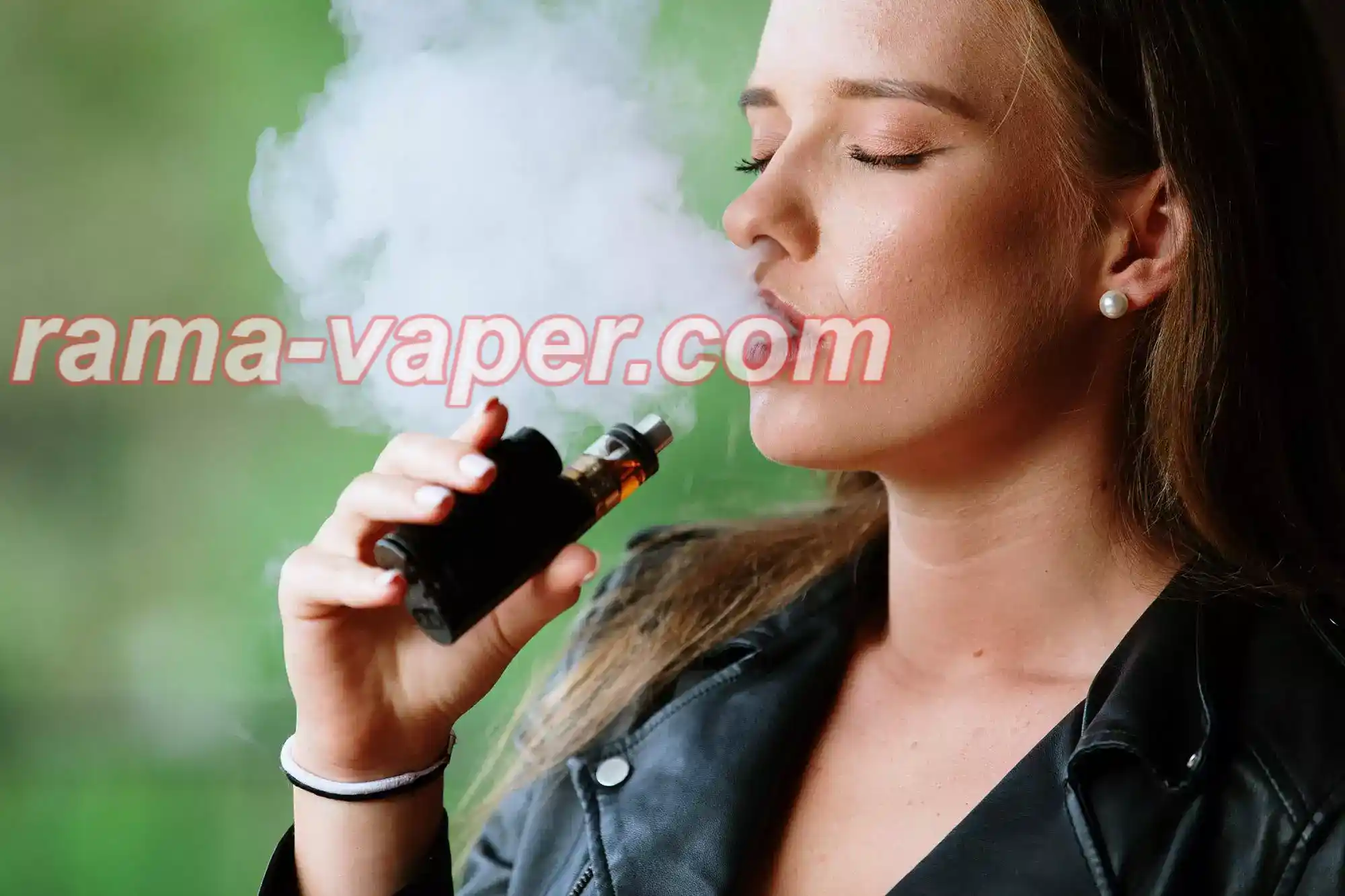The Mystery Behind Vape Juice Production: From Raw Materials to Finished Product!
Vape Juice: Composition, Production, and Considerations
Vape juice, also known as e-liquid, is the electronic vaporizing liquid used in combination with vapes. Whether it’s the vape pen or the vape pod, these devices act as carriers for the vaporization process. The core element that determines the safety and quality of a vape is the vape juice itself — the liquid that is vaporized.
A typical vape consists of two main parts: the device body and the vaporizer. The vape juice is the liquid inserted into the vaporizer, which, when heated, turns into vapor that is then inhaled by the user.
There are currently over 8,000 known flavors of vape juice, ranging from various fruits to coffee, bread, and toast. Whatever you can imagine, there’s likely a corresponding vape juice flavor for it.

1. Ingredients of Vape Juice
Vape juice primarily consists of five ingredients: food-grade propylene glycol (PG), food-grade vegetable glycerin (VG), food-grade flavoring, nicotine, and additives. Broadly speaking, VG is responsible for the vapor, nicotine provides the throat hit, nicotine also gives the satisfaction, and flavoring/ additives are what enhance the taste.
- Propylene Glycol (PG): A Solvent
PG (Propylene Glycol) is a common food and pharmaceutical additive. It’s hygroscopic, slightly sweet, colorless, and odorless, with excellent fluidity. According to the U.S. Food and Drug Administration (FDA), PG is generally recognized as safe for human consumption. In vape juice, PG mainly serves as a carrier for the flavoring, enhances the throat hit, and produces a small amount of vapor when heated. It can also dilute VG, lowering the viscosity and helping the liquid flow better. Vape juice with higher PG content tends to have a stronger throat hit and less vapor. - Vegetable Glycerin (VG): The Source of Vapor
VG (Vegetable Glycerin), also known as glycerol or glycerin, is another common ingredient in daily-use products such as cosmetics, food, alcohol, and candy. For those who love sweet treats, VG is prevalent in many baked goods like cakes and cookies. In vape juice, VG is responsible for generating the aerosol, or vapor. When heated, VG produces a significant amount of vapor. A higher VG content generally results in thicker vapor and smoother hits, but it can slightly reduce the flavor intensity and throat hit due to its viscosity. - Food-Grade Flavoring: The Flavor Source
Flavoring is crucial to the vape juice and is considered its "soul." The flavor of a vape juice is determined by the combination and proportion of various flavoring ingredients. A complex and unique flavor typically involves an intricate formula, and special flavorings like mint can also add a sensation of freshness or a "throat hit." - Nicotine: The Source of Satisfaction
Nicotine primarily serves to relieve cravings and provide the throat hit. It also contributes to the overall taste of the vape juice. Some manufacturers use tobacco extracts for nicotine, while others use synthetic nicotine salts. Common nicotine concentrations in vape juice include 0mg, 6mg, 13mg, and 18mg, with higher numbers indicating stronger nicotine content, more intense throat hits, and a harsher inhale. Most users find 6mg to be the ideal concentration for balancing satisfaction and throat hit without being too harsh. The new national regulations for e-cigarettes state that the nicotine concentration in vape juice should not exceed 20mg/g. - Additives: Taste Enhancers
Additives include sweeteners, sour agents, throat-soothing compounds, and deionized (distilled) water. Their primary role is to improve the taste or offset the bitterness or sourness of certain flavors. For example, if a vape juice has a slightly bitter or sour aftertaste, a sweetener might be added to balance the flavor.

2. Vape Juice Production Process
The process of making vape juice is complex and requires precision to ensure both safety and effectiveness. The science behind it is intricate, involving exact proportions of ingredients and careful quality control. Here's an overview of the vape juice production process:
- Raw Materials Preparation: The basic ingredients include propylene glycol (PG), vegetable glycerin (VG), nicotine solution, and food-grade flavorings. PG and VG are the core components of the juice, with PG enhancing the throat hit and VG providing thick vapor.
- Mixing and Proportioning: First, PG and VG are mixed in specific ratios depending on the desired vape experience. For instance, a 40:60 ratio of PG to VG is typical for smaller vapes, while larger vapes tend to use a 60:40 ratio. Afterward, nicotine is added according to the desired concentration, and then flavoring is incorporated. The typical flavoring content ranges from 5% to 20% of the total volume, depending on the strength of the flavoring and the desired taste profile.
- Stirring and Blending: This step ensures that all the ingredients are thoroughly combined. The mixture should be well-stirred to break down the flavor molecules, allowing them to recombine and fully integrate during the "steeping" process. During stirring, tiny bubbles are incorporated into the liquid, which gives it a cloudy appearance and can affect the taste during initial use.
- Steeping (Aging): After mixing, the vape juice needs to steep for several hours to allow the flavors to mature. For smaller batches (10-200 ml), this may take 4 hours, but larger quantities may require up to 8 hours. This "steeping" process, also known as "maturation," helps to improve the overall balance and smoothness of the vape juice. The steeping process is highly sensitive to temperature, humidity, and airflow. Some manufacturers use barrels made of wood, like oak, to encourage aeration, which further refines the taste. Additionally, the juice may undergo treatments like oxidation prevention and passivation to ensure its stability.
3. Considerations for DIY Vape Juice
While making your own vape juice might seem simple with the right tools, it requires a deep understanding of the process. Achieving the perfect blend of "satisfactory vapor," "smooth inhalation," and a "strong yet non-irritating throat hit" depends heavily on the balance between PG, VG, nicotine, and flavoring.
Key considerations when making your own vape juice include:
- Quality Materials: Use high-quality, pure ingredients to ensure the best possible results in terms of both safety and flavor.
- Precise Mixing: Be accurate with the proportions of each ingredient to avoid imbalance, which can negatively affect the flavor or the vape experience.
- Safety: Always ensure safe handling practices, particularly when working with nicotine solutions, as nicotine is a toxic substance.
- Maturation: Just like wine, vape juice can improve with age. Depending on personal taste preferences, the steeping time can be adjusted.
Given the complexity of the process and the need for precision, it is not recommended to make vape juice at home without professional knowledge. It's safer to purchase vape juice that has been professionally formulated, ensuring both its quality and safety. Additionally, it's important to select reputable vape juice brands and retailers to avoid counterfeit or substandard products.

4. Quality Control and Safety in Vape Juice Production
Ensuring the safety and quality of vape juice involves strict quality control throughout the production process. From ingredient selection to final product testing, every step must be carefully monitored to avoid contaminants and ensure consistency in flavor, nicotine content, and overall performance. The vape juice industry is subject to various regulations, especially in countries like the U.S., the European Union, and China, which require compliance with standards for manufacturing and labeling. These standards are designed to minimize health risks and provide consumers with safe products.
One of the key aspects of quality control is testing the raw materials before they are used. Propylene glycol (PG), vegetable glycerin (VG), nicotine, and flavoring compounds must all meet high purity standards to avoid any harmful additives or impurities. For example, nicotine should be tested to ensure that it is of pharmaceutical-grade quality, while flavorings must be food-grade and free of harmful substances like diacetyl, a chemical linked to respiratory issues.
Once the ingredients are mixed, the final vape juice undergoes rigorous testing for several factors, including:
- Nicotine Concentration: Accurate nicotine levels are crucial. Incorrect nicotine concentrations can result in either insufficient satisfaction or excessive harshness, both of which can ruin the vaping experience. Testing ensures that each batch meets the desired nicotine strength as labeled.
- Flavor Profile: As flavor is such a central element of vape juice, manufacturers perform sensory testing to evaluate the taste, aroma, and overall quality of the flavoring. Adjustments are made based on feedback from testers to ensure consistency.
- Vapor Production: The vapor produced by a vape juice is another critical factor. The ideal vape juice should produce a satisfying amount of vapor that matches the user’s preference. Testing the vapor volume ensures that the right PG/VG ratio has been maintained.
- Chemical Safety: In addition to sensory tests, vape juice is analyzed for potential harmful chemicals such as heavy metals, volatile organic compounds (VOCs), or carcinogens that could form during the vaporization process. This is important for consumer safety, as heating certain substances can create toxic byproducts.
Another critical consideration in vape juice production is the packaging. Vape juice must be stored in child-proof containers and clearly labeled with the nicotine content, ingredient list, and potential health warnings. This is particularly important given the risk of accidental ingestion of nicotine, especially among children. Proper packaging ensures that the product is both safe to use and easy to store.
Finally, manufacturers should ensure that their vape juice undergoes proper storage conditions during and after production. High temperatures and direct sunlight can degrade the quality of the nicotine and flavoring compounds, leading to a loss of potency and flavor. Therefore, most vape juice products are stored in cool, dark environments until they are ready for distribution.
5. The Importance of Proper Storage and Shelf Life
The shelf life of vape juice varies depending on its ingredients and storage conditions. Typically, a well-made vape juice can last anywhere from 1 to 2 years if stored properly. However, over time, the flavor and nicotine content may begin to degrade. Exposure to light, heat, and air can accelerate the degradation process, so it is essential to store vape juice in a cool, dark place, preferably in an airtight container.
It is also important to note that the nicotine strength of a vape juice can change over time. Nicotine tends to oxidize when exposed to air, causing it to lose potency. If the vape juice turns a dark yellow or brown color, it could be a sign that the nicotine has started to degrade. While this doesn’t necessarily make the product unsafe to use, it can affect the overall vaping experience.
As for flavor, many vape juice enthusiasts prefer to let their e-liquids "mature" or "steep" for a period before use, as the flavors continue to blend and develop over time. This process is typically done in a dark, temperature-controlled environment for anywhere between a few days to several weeks, depending on the specific flavor profile.
In conclusion, while making and using vape juice is generally safe when proper precautions are followed, it is essential to be mindful of the quality, storage, and handling of the product. For those new to vaping or DIY mixing, purchasing professionally made vape juice from reputable sources is always the safest option.
